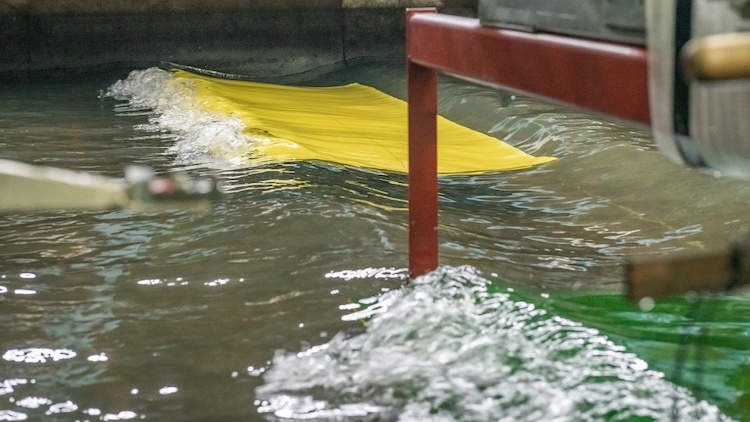J. van der Zanden1*, A. van der Hout2, W. Otto1, F. Spaargaren1, B. Walles3, J. de Wilde1
1 MARIN,
2 Wageningen Marine Research,
Background
The attenuation of waves is essential to secure maritime operations and to protect coastal regions against erosion. Wave-attenuating breakwaters, which can be either fixed or floating, attenuate incident wave energy by means of wave reflection and/or wave dissipation through friction and wave breaking. Compared to fixed breakwaters, advantages of floating breakwaters include their applicability in more challenging environments (deep water, poor foundation), their reduced environmental impacts (minimum interference with water circulation and fish migration, minimum bottom disturbance, minimum visual intrusion), and their flexibility (can relatively easily be re-arranged) [1]. Disadvantages of are that their efficiency is typically limited for longer waves and that it is challenging to design a floating breakwater that is effective for a broad range of wave conditions. Within the present project, a new floating breakwater concept characterised by low hydrodynamic loads was developed.
Methods
The floater was designed for wave conditions typical for inland lakes or estuaries. In order to reduce the net hydrodynamics loads on the structure, the incident wave energy needs to be dissipated rather than reflected. An effective way to dissipate wave energy is wave breaking. The floating breakwater was therefore designed in the form of a parabolic beach that enforces incident waves to break. Within the project, first the floater was optimised through computational fluids dynamics (CFD) simulations. Next, a mooring layout was designed for shallow water conditions using wave diffraction and time domain simulation software. Finally, the design was tested in MARIN's shallow water wave basin.

Figure: Waves breaking over the new floating breakwater design during scale model tests.
Results
Tests show that the breakwater reduces the incident wave energy by 40 to 80%. The breakwater is especially effective in attenuating relatively high waves, that are more likely to break, and relatively short waves, which are reflected. Compared to existing designs, the new breakwater design shows a more favourable balance between net wave loads on the structure and wave attenuation. The effect of additional surface roughness, representing, e.g., the effects of a grass or shellfish cover, was also tested. The additional roughness had little effect on the wave attenuation performance, but it did reduce the motions of the floater through an increased hydrodynamic damping.
Outlook
It is foreseen that the floating breakwater has potential as a stand-alone solution for shoreline protection, but also as a coupled module to reduce wave drift loads on larger floating structures (e.g., floating islands). The authors look forward to presenting the results at the NCK Days and are open for future collaborations.
References
[1] B. L. McCartney, "Floating breakwater design", J. Waterw. Port, Coastal, Ocean Eng., vol. 111, no. 2, pp. 304–318, 1985
I. Surname1*, F.N. Another-Surname2 , Y. Next-Surname2
1 University Name, Country; 2 Organization Name, Country
* Corresponding author: mail.name@organization.org


